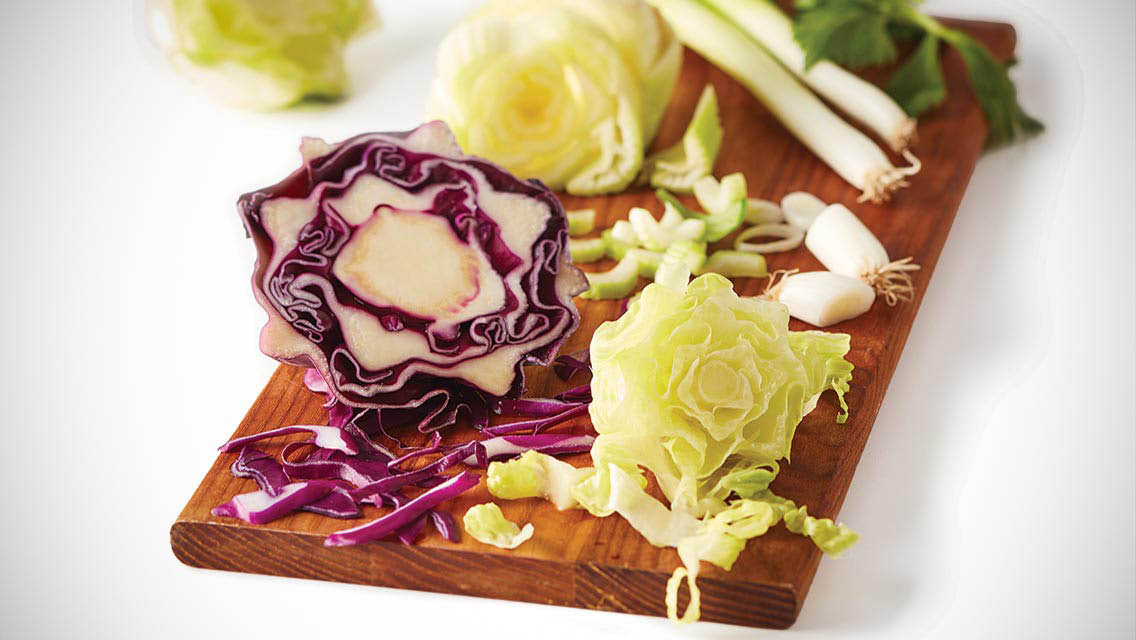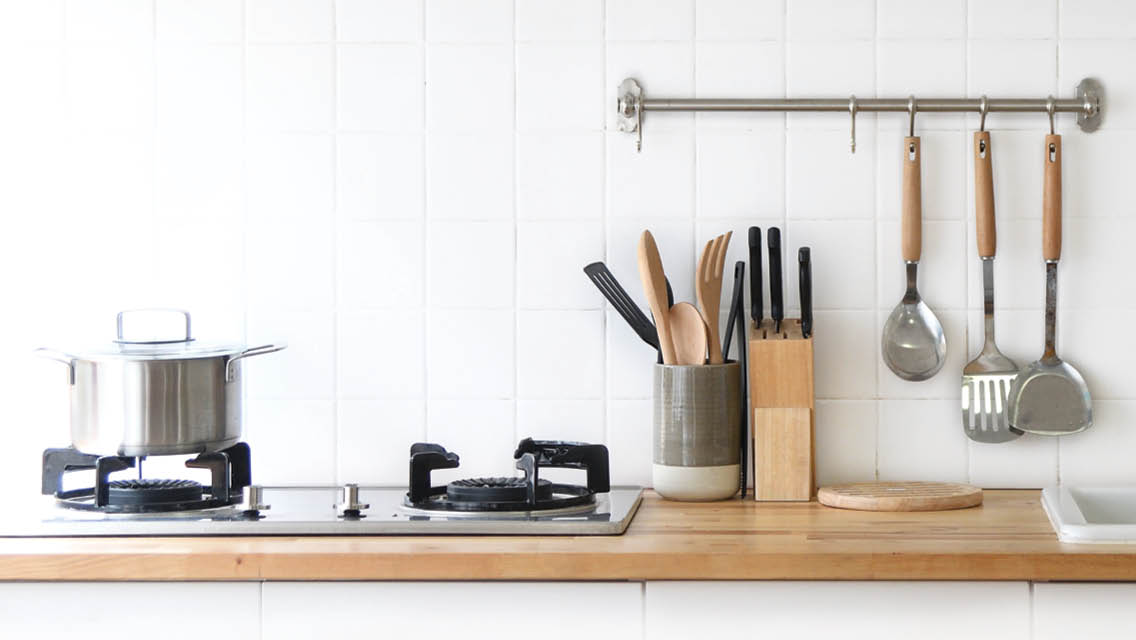For years, my mother has been offering to buy me a stand mixer — one of those beautiful jewel-toned appliances that adorn sleek countertops in spacious kitchens all over Instagram. It’s a characteristically thoughtful gesture: She knows I love to cook, and I haven’t always had the money to invest in top-of-the-line tools.
But for just as many years, I’ve resisted. Stand mixers require space, and my tiny apartment in St. Paul couldn’t accommodate even one more reusable straw.
My partner and I bought a house recently, just across the river in Minneapolis, with a lovely light-filled kitchen and significantly more counter space. We can hardly believe our good luck. Yet on the subject of a stand mixer, I’m still waffling.
I don’t bake very often, much less embark on the sort of complex pastry projects for which a stand mixer is designed to shine. Perhaps if I acquired one, I’d become a person who whips up meringues and kouign-amann on the regular. I could bake homemade sandwich bread on a weekday.
I think it’s just as likely that the stand mixer is a beautiful appliance for which I personally don’t have much use.
There are lots of such well-marketed gadgets, and it’s easy to be convinced that buying more stuff is the avenue to building confidence in the kitchen. But superfluous tools and overflowing cabinets are actually barriers to cooking and eating well. If you invest in a small collection of dependable things you love to cook with, you likely won’t need a host of other gizmos.
Here, I’ve assembled a list of my most indispensable gear, along with some items that I find less necessary but still nice to have around, and a few that you might consider earmarking for the future.
Of course, every home cook’s list will look a little different. Mine is pretty minimalist, honed over years of cooking out of small kitchens, and I imagine it will continue to grow as we settle in to our new space. I’m not sure it’ll ever grow to include weekly bread baking, but in the meantime, my mom is dreaming big enough for the both of us.
The Basics
- Cast-iron skillet. An incredible workhorse in my kitchen, my 12-inch skillet caramelizes onions, sears chicken thighs, and makes the best grilled cheese sandwich. It’s perfect for one-pan meals like braises, especially because I can move it from the stovetop directly into the oven with ease — and it releases trace amounts of iron into my food while it’s cooking, which is great for plant-based eaters. Cast iron is inexpensive and simple to maintain once you get the hang of it. (Check out my tips for maintaining your skillet at “How to Care for a Cast-Iron Skillet“.)
- Dutch oven. A good heavy-bottomed, enamel-coated Dutch oven will outlive you if you take care of it — and maybe even if you don’t. I recently removed several years of carbonized stains from the bottom of mine by simmering some water and a few tablespoons of baking soda in it.My 6-quart Dutch oven makes stews, broths, sauces, and so much more. Its thick walls heat evenly, and it’s big enough to make a double batch of lentil soup but small enough that I can move it from oven to stovetop without struggling.
- Medium saucepan. I use my 4-quart saucepan for cooking beans and grains, poaching or boiling eggs, and heating leftovers. I prefer stainless steel, but most any material will do — just be sure it has a heatproof handle and that it feels heavy in your hands, as thin pans tend to heat unevenly.
- Nonstick skillet. My cast-iron skillet is pretty well seasoned (meaning food will release fairly easily from its surface), but I like fried eggs too much not to have a true nonstick skillet. Go for ceramic coating — no Teflon or synthetics, as those surfaces will break down and release harmful substances into your food and the air in your home.
- Sheet pans. Invest in high-quality, heavy sheet pans, as you’ll need ’em for roasting veggies, toasting nuts, and baking cookies. The cheaper ones tend to be flimsy — they’ll warp in the oven and probably burn the bottom of whatever you’re cooking.
- Baking dishes. A 9-by-13-inch baking dish is the perfect size for most casseroles. I like mine for enchiladas, veggie gratins, and baked pasta dishes, as well as the occasional fruit crisp.
- Knives. You probably don’t need a whole knife block, but a good 8-inch chef’s knife is perfect for all-around slicing and dicing, and a paring knife is required for more intricate tasks like hulling strawberries or deveining shrimp.
- Cutting boards. I try not to use plastic in my kitchen if I can help it, but I do have a cutting board made of recycled BPA-free plastic scraps, which works well for raw meat and fish. It’s lightweight and easy to clean.For all other prep work, I use a big wooden cutting board, which doesn’t dull my knives like a glass board would and is heavy enough to stay in place while I’m chopping onions.
- Strainer and colander. A fine-mesh strainer is great for rinsing grains and straining sauces. A stainless-steel colander will make it easier to wash veggies and drain pasta — and if you get one that fits in your saucepan, it can pull double duty as a steamer basket.
- Food processor. I use my food processor to make pestos, nut butters, and other sauce-adjacent things. It’s also perfect for recipes that call for pulverizing lots of ingredients into a uniform mixture, like veggie burgers or energy bars. Get one with a grating disk to grate up a big pile of hash browns or carrots with the push of a button.
- Other basics: spatulas, wooden spoons, mixing bowls, measuring cups and spoons, can opener, whisk.
Nice to Have
- Serrated knife. These are useful for slicing anything with tender, squishy insides, like ripe tomatoes or a loaf of crusty bread. A sharp serrated knife can also cut through lots of things that seem uncuttable, like blocks of frozen spinach or whole heads of garlic.
- Vegetable peeler. Can you peel vegetables with a paring knife? Absolutely — but should you have to?
- Microplane. This zests and grates better than anything else. Add some lemon zest to your risotto, shave a little fresh nutmeg into your coffee, or grate up some ginger for a flavorful curry — no mincing required.
- Handheld citrus juicer. Lots of dishes can benefit from a squeeze of fresh lemon or orange juice, and this tool has straining holes so you won’t have to go spelunking for errant seeds.
- Blender or immersion blender. I have both — I like my high-speed stand blender for smoothies and super-creamy dips and purées, while the immersion blender is great for blending a soup or sauce right in the pot.
- Honing rod. If you’re gonna have knives, you gotta treat them right. Sharpen at least once a year (many grocery and cookware stores will do this for a nominal fee), and use a honing rod a few times per month to maintain your knife’s edge — or more frequently, if your knives get a lot of use. (Get my tips for using a honing rod at “How to Hone Your Knives“.)
- Other nice-to-haves: stockpot, tongs, ladle.
Level Up
- Hand mixer. These can do nearly everything a stand mixer can do but won’t take up precious counter space. You can whip egg whites and cream with a whisk if you’re really committed to the task, but a hand mixer is inexpensive and a real labor saver.
- Teakettle. Placement in this category may be controversial for tea lovers, but the truth is that you can heat water in a stockpot or a saucepan quite easily. Still, is it nice to have a tool just for tea making that pours perfectly and yelps when it’s ready? It really is.
- Knife sharpener. If you don’t want to outsource your knife sharpening, you can buy a handheld one for home use.
- Salad spinner. You can rinse your greens in a colander, but if you don’t want a soggy salad, a spinner is a smart investment.
- Muffin pan. These are good for more than just your standard pastry: Think individual meatloafs or mini egg quiches. (Get our recipe for “Breakfast Egg Muffins“.)
- Other ways to level up: kitchen scale, kitchen shears, grill pan, instant-read thermometer.
This article originally appeared as “Streamline Your Kitchen” in the May 2021 issue of Experience Life.





This Post Has One Comment
I was born and brought up in the 1950s and love the old cooking equipment!